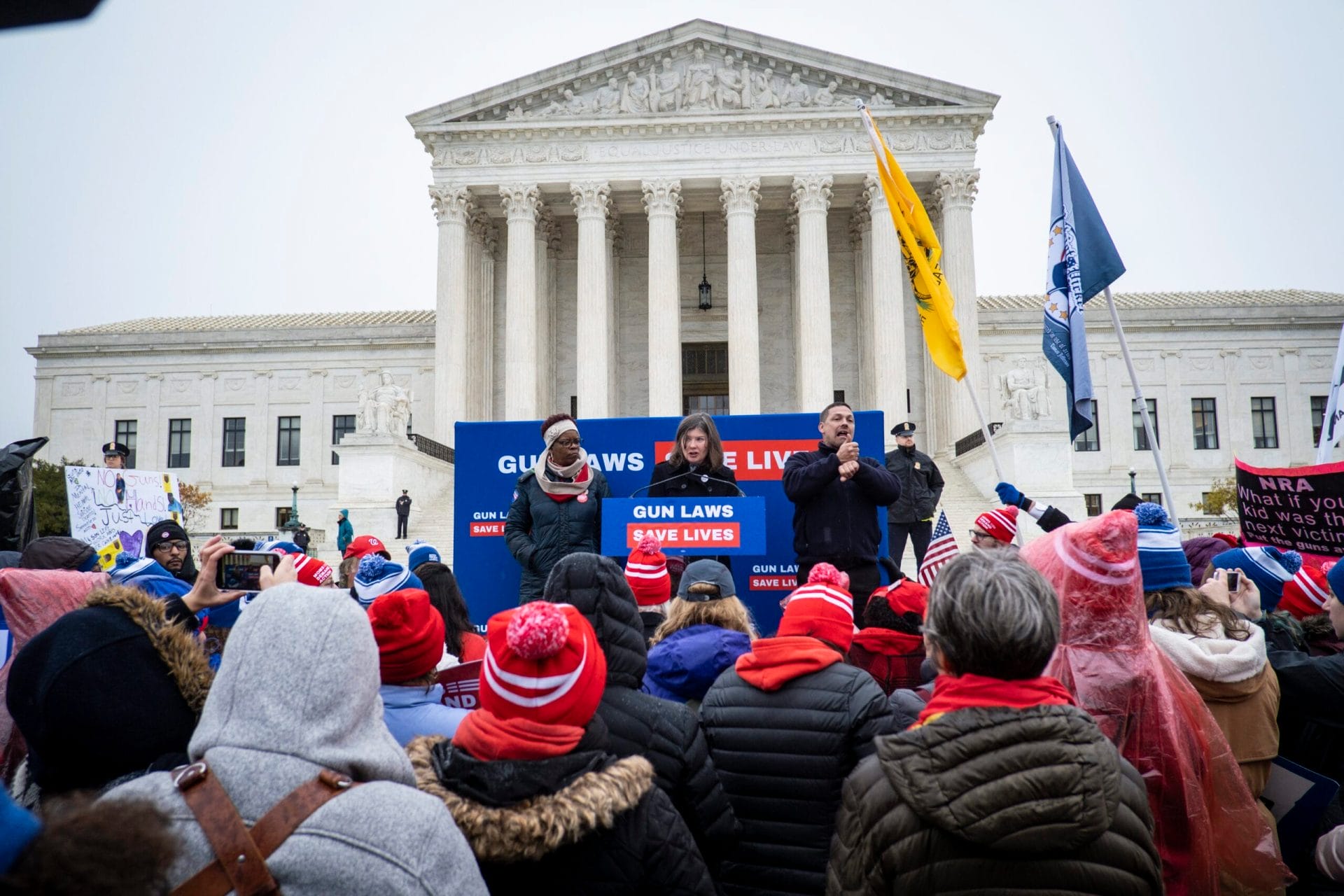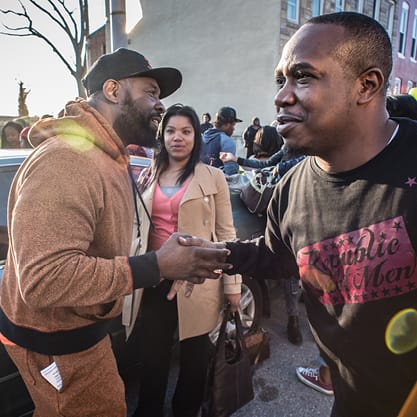
Legal Experts Urge the Supreme Court to Reverse Rahimi
In June 2022, the Supreme Court issued its first significant Second Amendment decision in more than a decade, holding for the first time in NYSRPA v. Bruen that there is a constitutional right to carry a handgun outside the home for self-defense.
Domestic Violence
The combination of intimate partner violence and access to guns is an especially deadly mix.
In the wake of Bruen, gun extremists flooded the courts with challenges to long-standing gun safety laws, sparking more than 450 disputes in lower courts about gun laws. One challenge arising out of a criminal case—not out of an affirmative gun lobby–backed challenge—has made its way to the Supreme Court and is the only Second Amendment case this term: USA v. Rahimi.
The defendant in the case, Zackey Rahimi, was convicted of possessing a gun while subject to a domestic violence protective order. He challenged the law as violating the Second Amendment. In February, the Fifth Circuit Court of Appeals—the federal appeals court with jurisdiction over Louisiana, Mississippi, and Texas—issued a dangerous and misguided decision that would allow him, and others subject to domestic violence restraining orders, to possess a gun. This decision immediately put existing gun safety laws and countless lives under threat, and the Department of Justice quickly took action to bring the case to the Supreme Court.
Now, it’s on the Supreme Court to clarify that laws preventing people subject to domestic violence restraining orders from accessing guns don’t violate the Constitution.
Giffords Law Center and our partners are fighting every step of the way to protect existing gun safety laws. We filed an amicus brief urging the Supreme Court to overturn the Fifth Circuit’s decision in Rahimi, and oral arguments are scheduled for November 7.
MEDIA REQUESTS
Our experts can speak to the full spectrum of gun violence prevention issues. Have a question? Email us at media@giffords.org.
Contact
The Future of Gun Laws
In advance of the Rahimi oral arguments, legal experts across the country have been advancing scholarship relevant to this monumental case. Fordham Urban Law Journal’s latest edition focuses on the future of gun regulation following Bruen. Below are some examples of the compelling legal articles from this issue.
Time and Tradition in Second Amendment Law
Jake Charles, an associate professor of law at Pepperdine University’s Caruso School of Law, wrote a powerful article about the Supreme Court’s inconsistent treatment of time when it comes to the Second Amendment, comparing how different decisions rely on different eras of American law.
In Heller, a 2008 ruling that marked the first Supreme Court ruling on the Second Amendment in nearly 70 years, the Court clarified an individual’s right to have a handgun in the home for self-defense but denied that the Second Amendment provides an unlimited license to bring weapons into all corners of American society. It introduced a “common use” test to determine which weapons are protected in the modern day.
But with Bruen, the Court called for a new constitutional test, one that is rooted in the distant past, requiring the government to “demonstrate that the regulation is consistent with this Nation’s historical tradition of firearm regulation.” Charles argues that we are watching in real time as this radical Court bends the rules to reach its desired outcome in each case—gun rights obtain evolving protection, but government regulations of guns don’t.
When it comes to Rahimi, the Court’s cherry-picking of time periods to use as precedent could have deadly consequences for Americans at risk of domestic violence.
“The Peace,” Domestic Violence, and Firearms in the New Republic
Laura Edwards, professor of American history and law at Princeton University, also discusses the history of gun regulations and protections for victims of domestic violence. She argues that we can’t assume the absence of gun regulations in the 19th century means that guns were unregulated, just as we can’t assume that the first domestic violence protections mark a transition from when it was legal to abuse an intimate partner to when it was illegal.
So, when using the Court’s Bruen history-based test in Rahimi, it’s important to take the institutional context of the era into account.
Making Sense of Limits on the Right to Keep and Bear Arms in the Founding Era
Saul Cornell, chair in American history at Fordham University and adjunct professor of law at Fordham Law School, makes a similar argument—that context is key when attempting to understand the Second Amendment. In the founding era of the United States, the concepts of regulation and liberty were linked, a perspective that feels implausible to many today. Cornell asserts that while modern debate is partially focused on whether the Second Amendment is either an individual right or a collective right, this isn’t how Americans in the founding era understood either of these concepts.
As originalists on the Supreme Court approach the Second Amendment, it’s crucial to get the history right—especially as the Court considers Rahimi this term.
GET THE FACTS
Gun violence is a complex problem, and while there’s no one-size-fits-all solution, we must act. Our reports bring you the latest cutting-edge research and analysis about strategies to end our country’s gun violence crisis at every level.
Learn More
The Supreme Court Must Overturn the Fifth Circuit’s Decision
The Supreme Court’s ruling in Rahimi will have widespread consequences. If the conservative Court allows the Fifth Circuit’s decision to stand, the new standard it sets will threaten many other existing gun safety laws—putting all Americans at risk, especially victims of domestic violence.
We’re grateful that Fordham Urban Law Journal dedicated an issue to scholarship around this issue. Lives across the country hang in the balance.
If you’re in Washington DC, join Giffords on November 7 as we rally on the steps of the Supreme Court to draw attention to this case and the impact it will have. We must protect survivors and disarm domestic violence.

SPOTLIGHT
REDUCING RISK
Explore the options and strategies available for addressing specific types of gun violence and reducing the risk of a dangerous situation ending in tragedy.
Read More
TAKE ACTION
Students, veterans, survivors: Americans from all walks of life across the country are standing up for commonsense gun reform. If you’re fed up with politicians who care more about protecting gun lobby profits than your safety, stand with us in this fight.
Join Us